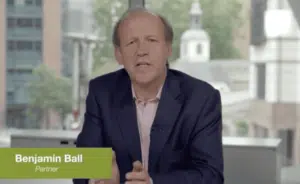In our contemporary society, social insecurity can manifest in various forms, turning challenges into a vicious cycle that is difficult to break. Inadequate social protection systems, questionable political choices, and precarious working conditions contribute to this relentless machinery. This results in a growing sense of vulnerability among individuals, often accompanied by social anxiety preventing their full participation in collective life. However, intervention perspectives exist to break these chains, paving the way toward a more inclusive and equitable future.

The vicious cycle of social insecurity manifests when individuals are trapped in an inextricable cycle of precariousness that affects multiple spheres of their existence. This phenomenon, which contributes to the reproduction of poverty from generation to generation, makes it difficult to improve the quality of life for those who are victims of it. People stuck in this cycle often encounter obstacles such as limited access to education and significant difficulties in professional integration, thereby increasing their economic vulnerability.
The absence of effective safety nets exacerbates this problem, leaving individuals in a deadlock where they find no way out to improve their situation. Social pressure and fear of judgment also reinforce this insecurity, pushing some towards isolation and inhibiting their social integration. The insufficient availability of affordable housing and inadequate health services adds to the severity of the problem, preventing these individuals from leading a dignified life and seizing opportunities to get out.
To break this cycle, it is crucial to go beyond mere financial assistance. Addressing the determinants of vulnerability and strengthening support for education, health, and social inclusion are essential to give everyone the chance to break the chains of social insecurity.

Understanding the Origin of Social Insecurity
The vicious cycle of social insecurity is a complex reality that generates a chain of negative reactions. One of the main triggering factors is social pressure, which creates a constant fear of judgment and reinforces a feeling of inferiority. In this context, anxiety and stress become permanent companions, often leading to withdrawal. This withdrawal, fueled by the fear of inadequacy, further harms self-confidence and amplifies isolation. Originally designed to protect against dangers, this mechanism ends up trapping individuals in a bubble of insecurity.
Visible Consequences in Daily Life
The repercussions of this insecurity are numerous and often manifest in a discreet but persistent manner. They primarily affect the mental state and social life of individuals. As a result, many people develop avoidance strategies, limiting their social and professional interactions. This withdrawal can manifest as a refusal to participate in events, fear of public speaking, or difficulties in expressing ideas clearly. In fact, these defensive strategies, while seeming protective in the short term, only further anchor individuals in this state of insecurity and reduce their opportunities for personal and professional development.
For some individuals, financial precariousness due, for example, to detrimental political choices, adds an additional layer to this cycle. A low level of education or difficulty accessing stable employment further exacerbates this feeling of uncertainty and stress, thereby fueling a vicious cycle that is hard to break. In these situations, economic and social limitations overlap, making it all the more complex and arduous to escape this pattern of isolation.
Strategies to Break the Cycle
There are promising ways to reduce the impact of this spiral of social insecurity. The first step is to strengthen personal resilience by developing tools to counter the impact of stress and anxiety. A promising approach is to encourage education and promote accessible mental health services so that everyone can benefit from appropriate support. In addition, integrating programs that promote inclusion in professional and social environments also plays a key role. Through these concerted actions and the support of public policies, we have the opportunity to create a world where social security is a right, not a privilege reserved for some.

FAQ
Q : What is the vicious cycle of social insecurity?
A : The vicious cycle of social insecurity refers to the dynamic where social insecurity, due to factors such as lack of safety nets and unfair economic choices, reinforces the precariousness of individuals and families, creating a cycle that is difficult to break.
Q : What are the main factors contributing to this vicious cycle?
A : The main factors include school failure, difficulties in professional integration, the concentration of poverty, as well as failing social protection systems and inadequate health services.
Q : How can we hope to break this vicious cycle?
A : To break this cycle, it is crucial to go beyond monetary aid. We need to address the determinants of vulnerability by investing in education, health, and strengthening the capacities of security forces as well as support for civil society.
Q : What role does mental health play in this context?
A : Mental health is a crucial aspect, as it is both affected by social insecurity and a factor that can reinforce it. The campaign “Precariousness and mental health: breaking the vicious cycle” highlights the importance of mental health in combating social exclusion.
Q : Why does poverty create exclusion in different areas of life?
A : Poverty leads to the absence of opportunities, preventing individuals from participating in economic and social activities, and isolating them further, which fosters a climate of generalized exclusion.











